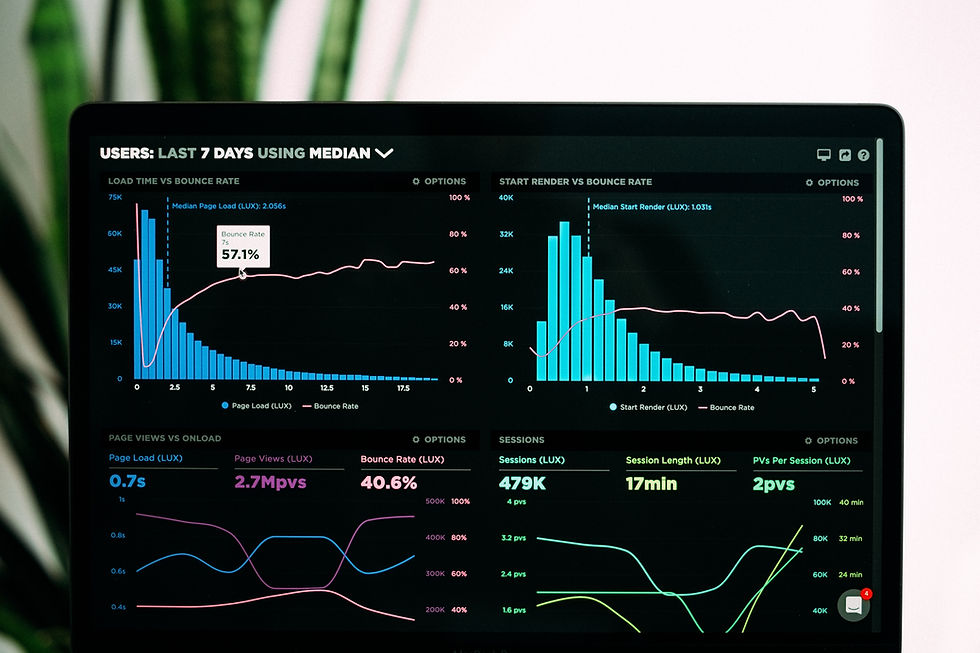Why Your Website Isn’t Converting (and How to Fix It)
- Thomas Walker
- Aug 21
- 3 min read
Your website might be beautiful, but if it’s not turning visitors into leads or customers, then it’s not doing its job. The truth is, even small mistakes in design, copy, and user experience (UX) can silently kill your conversion rates. At Atlas MKT, we see it all the time, businesses spend thousands on their site’s appearance but overlook the elements that actually persuade people to take action. The good news? Most of these issues are fixable, and often, a few smart changes can lead to significant improvements.

The Problem with First Impressions
Visitors make a decision about your website in seconds. If your messaging isn’t instantly clear, or if your design feels cluttered and confusing, potential customers will leave before they even see your offer. A high bounce rate is often a sign that your site is failing at the first hurdle.
To fix this, focus on clarity. Make sure your headline communicates your core value proposition, your visuals reinforce your message, and your navigation is clean and intuitive. Your homepage should guide visitors towards the next step, not overwhelm them with distractions.
Weak or Generic Copy
Great design will catch the eye, but great copy keeps people engaged. Many websites fail because their content is bland, overly technical, or simply focused on the wrong things. Your visitors want to know what’s in it for them - quickly.
The solution is to use clear, benefit-driven language that speaks directly to your target audience. Instead of listing product features, show how those features solve real problems. At Atlas MKT, we work with businesses to develop a brand voice that connects emotionally while also nudging visitors toward conversion. You can read more about our approach to messaging on our Blog.

Poor User Experience (UX)
If your site is slow, hard to navigate, or not optimised for mobile, you’re losing potential customers before they have the chance to buy. Today, more than half of web traffic comes from mobile devices, so a seamless mobile experience is non-negotiable.
Improving UX starts with streamlining navigation, reducing unnecessary clicks, and ensuring that key pages load quickly. Strategic use of white space, clear headings, and consistent layouts also make it easier for visitors to find what they need - and act on it.
Missing or Weak Calls-to-Action (CTAs)
Your visitors won’t take action if you don’t tell them what to do next. Surprisingly, many websites hide their CTAs or use vague phrases like “Learn More” that fail to create urgency or interest.
Instead, make your CTAs bold, specific, and benefit-led. “Get Your Free Quote Today” or “Book Your Consultation Now” are far more persuasive than “Click Here.” Placement matters too, your calls-to-action should appear multiple times throughout the page, guiding the visitor toward conversion without feeling pushy.

No Trust-Building Elements
Even if your design, copy, and UX are solid, visitors might hesitate to convert if they don’t trust you yet. Missing trust signals - such as testimonials, reviews, case studies, and clear contact information - can make your business seem less credible.
Adding social proof, security badges, and transparent policies can significantly increase trust. Showcasing real customer results, like we do in our Portfolio, can also provide that final push someone needs to take the next step.
Turning Your Website into a Conversion Machine
A high-converting website doesn’t happen by accident,
it’s the result of strategy, testing, and continuous optimisation. By addressing the issues above, you can turn your site from a passive online brochure into a powerful sales tool that works 24/7.
If you’re tired of guessing why your site isn’t performing, our team at Atlas MKT can help you identify and fix the leaks in your funnel. Check out our Blog for more tips, explore client results in our Portfolio, or Book a Call today to start turning more visitors into customers.






Comments